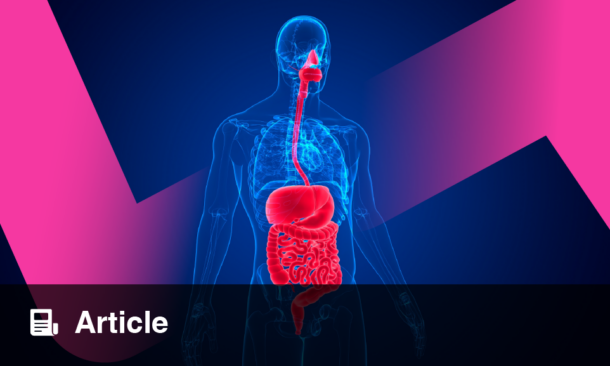Author: Darcy Richards, EMJ, London, UK
Citation: EMJ. 2024;9[2]:19-22. https://doi.org/10.33590/emj/HWFD3106.
![]()
SETTING THE SCENE
Jo De Cock, Former CEO, National Institute of Health and Disability Insurance (NIHDI); and World Health Organization (WHO) Consultant, introduced the two key factors implicated in rare disease treatment gaps: access and affordability.
Access, meaning getting the right treatment to the right patient at the right time, and at the right price, presents a multidimensional challenge influenced by numerous factors, including availability and the added value of the therapeutic, e.g., does it provide the right clinical benefit and does it address both patient and societal needs. Affordability on the other hand, encompasses the cost of the therapy and the ability for the cost to be paid.
De Cock noted that, according to the European Medicines Agency (EMA), 240 orphan medicines had market authorisation between 2003–2023, but there is no guarantee of equal access to these medications across Europe. He noted that almost 6,500 rare diseases have been identified, but there is a long road ahead to provide the appropriate treatments for the up to 36 million people living with a rare disease in Europe. He stressed that improved approaches and policies are needed to overcome this, before inviting Christine Leopold, Utrecht University, the Netherlands, to the stage to present from the drug regulatory science perspective.
ACCESS AND AFFORDABILITY: WHAT ARE THE CHALLENGES?
Leopold explored the factors that impact accessibility and affordability, explaining that research and development, drug authorisation, and the preparedness of health systems affect accessibility; and that health technology assessments (HTA), payment models, and out-of-pocket payments affect affordability.
Delving into these in greater detail, the main challenges associated with research and development in clinical trials that impact accessibility are the small numbers of patients, single-arm designs, and short duration compared with the potential lifetime benefit. This means that the trials performed are comparable to investigational drugs, and as such, regulatory decisions are often based on insufficient safety and efficacy data. Leopold noted that between 2013–2023, according to IQVIA data, the number of clinical trials for rare diseases has not increased in the same way as clinical trials for other diseases. Furthermore, there is a clear disparity in that most of the rare disease trials, across all phases, occur in the field of oncology. This unmet need will need to be addressed to improve accessibility in the future.
With respect to health system preparedness, Leopold explained that many new drugs for rare diseases require special administration. This generates a need for appropriate training of staff and requires appropriate infrastructure and access to, and availability of, testing, as well as service redesigns. Whilst this does pose a challenge, Leopold explained that since 2017, the first 24 European Reference Networks (ERN) were launched, involving >900 highly specialised healthcare units from >300 hospitals in 26 member states, and that these will be the way forward to increasing access to treatments and ensuring skilful drug administration.
In terms of affordability, most orphan drugs are impacted by budget and potential uncertainty regarding their effectiveness due to mismatches between regulatory and HTA evidentiary requirements. Leopold highlighted that the time to the first HTA decision is longer for orphan medicines than standard medicines. In addition to the budget impact, innovative payment models can often be too complex to implement. Leopold also drew attention to out-of-pocket payments, which appear to disparately affect Central and Eastern European countries, compared to higher-income countries, which is concerning.
When discussing future hopes, Leopold put the spotlight on the WHO and Europe’s Access to Novel Medicines Platform, a neutral platform unifying all stakeholders to reshape political discourse through the aims of establishing collaboration, improving transparency, strengthening voluntary collaborations that focus on solidarity, developing principles that recognise the need for sustainability, and identifying policy options for sustainable innovation and access to novel antimicrobials. This could help create partnerships to build momentum for change. Leopold commented that she hopes to see concrete outcomes from this by 1 year.
She concluded that whilst regulatory pathways have seen movement in 10 years, resulting in more products on the market, there remains a lot of work to do around paying for these drugs. There is a need to invest into horizon scanning and early scientific advice; strengthen health care systems through ERNs; and establish multidisciplinary team processes involving patients, clinicians, payer organisations, and HTA organisations to collect the evidence needed for the reimbursement process. Leopold stressed that this needs to be done at the European level, not just at the national level.
Following this, a roundtable discussion with key stakeholders took place to gain perspectives on the challenges across different domains, including industry, patients, and reference networks. This highlighted discrepancies between market access to treatment and effective patient access to treatment. When considering access to treatment and market authorisation, Mariangela Pellegrini, APHP Hospital Saint-Louis, Paris; and ERN-EuroBloodNet Educational & Patient Program Manager, Paris, France, emphasised the need to contemplate the full pathway, including post-production elements, such as the burden on patients and healthcare providers. She also spoke on the need to consider mapping availability and accessibility for rare disease treatments and including both societal and patient burdens in these pathways. Additionally, Pellegrini raised the issue of distributive justice, noting that access to treatment for all patients and all rare diseases should be given, but not all countries are able to afford orphan medicines or have the healthcare infrastructure to provide them. She suggested that cross-border health directives and social security regulations, as well as national plans for rare diseases, are needed.
From the patient perspective, Daniel De Vincente, Asociación de pacientes ASMD España, Madrid, Spain, stressed the importance of involving patients from the very start of treatment development, highlighting that patients can help design trial endpoints as they know the unmet needs they face. Trial endpoints are not always aligned with the impact on quality of life for patients.
PROPOSED SOLUTIONS
All stakeholders discussed the need for greater solidarity and collaboration to provide access to patients across borders.
The utilisation of ERNs was discussed as the common ground for harmonising data that are accessible, interpretable, searchable, and reusable. Pellegrini highlighted that by collecting data in registries such as Patient Reported Outcome Measures and real-world data registries, and epidemiological platforms, valuable insights for research and policy makers could be provided. This could aid the evaluation and estimation of pay-for-performance schemes to review the risks and benefits of developing a treatment, and provide information about the right centre to develop a clinical trial. She further emphasised that platforms collecting Patient Reported Outcome Measures and real-world data would provide a valuable tool for developing repurposed drugs, which is key for treating rare and ultra-rare diseases. ERNs have the structure for providing, collecting, and sharing these data, alongside the appropriate ethical and legal frameworks. Moreover, registries allow for the tracking of data, including clinical, quality of life, and cost of administration at the healthcare provider level, which would enable accurate resource allocation.
Leopold echoed the need to strengthen ERNs and focus on joint negotiations and collaboration. She highlighted that even outside of rare diseases, studies on price negotiations have shown that different hospitals at the local level do not communicate and negotiate for medicines independently. This challenge also occurs at the national level and indicates that trust is an issue that needs to be addressed. She noted that the awareness that researchers and policy makers need to collaborate is increasing, with some good initiatives already underway.
The stakeholders encouraged cross-border health directives and discussed that national rare disease plans should provide standard-of-care lists. In this way, cohorts of member states could be developed to match needs, economical systems, and infrastructure to create an analysis of the unmet medical needs, what can be offered, and where groups of countries could propose joint procurements when buying a treatment. De Vincente spoke on the fact that patients often bear invisible costs, such as impacts on their ability to work, environment, and education. He stressed that equitable access between different countries is required and that this is a global responsibility, noting that joint negotiations would be a good idea, particularly for ultra-rare disease advanced therapies, where there are very small numbers of patients.
Other potential solutions discussed included joint regulatory and HTA assessments, with mutual recognition and facilitation across borders, streamlining the time from clinical proof of concept to market, sustainable drug development, and pricing transparency.
CONCLUSION
Overall, the unambiguous message delivered was that of a need for unity and collaboration at both the national and European levels, with input from all stakeholders, in order to effect meaningful change in policy, accessibility, and affordability, and work towards the goal of bridging the treatment gap for people living with a rare disease.







